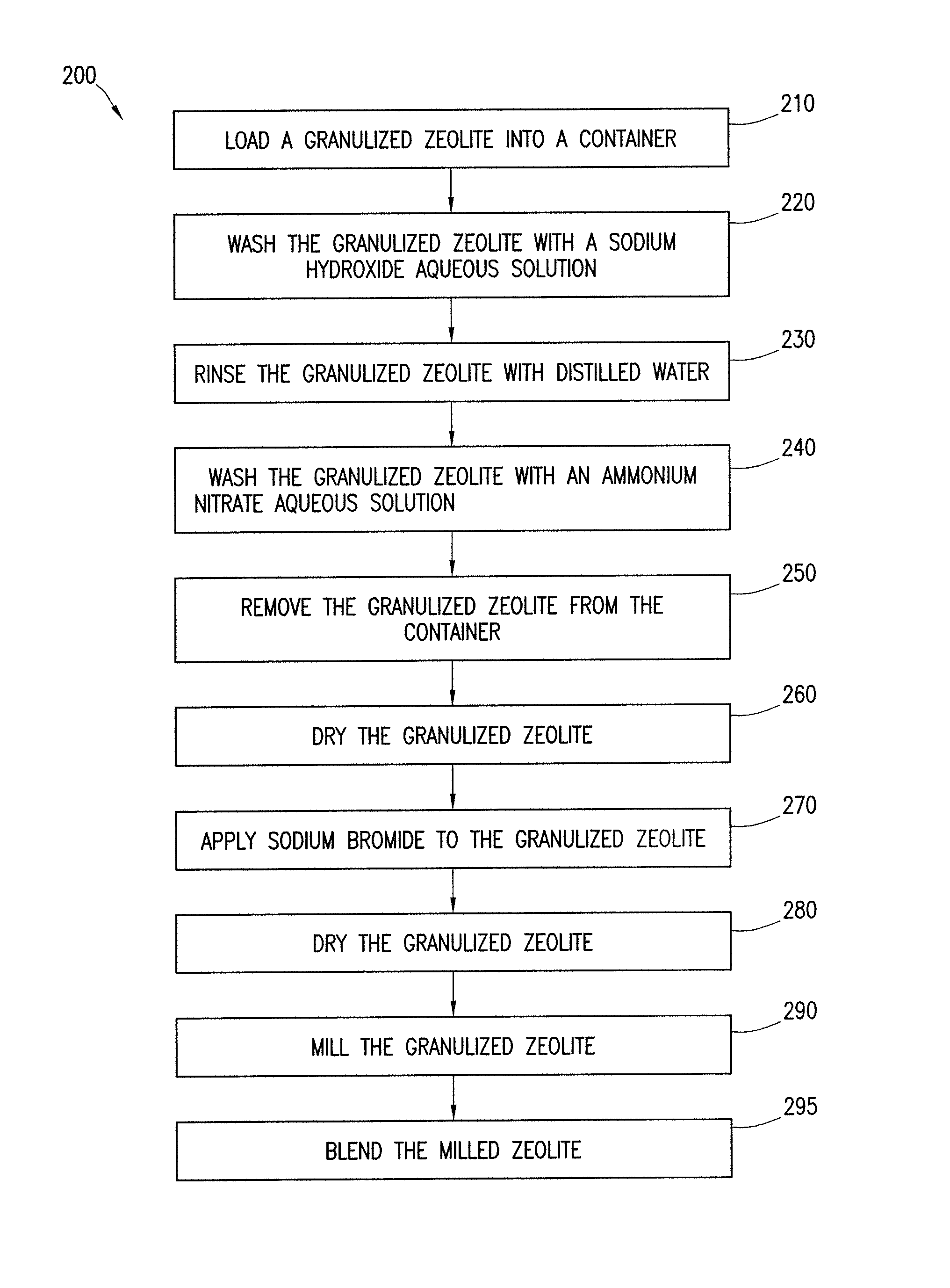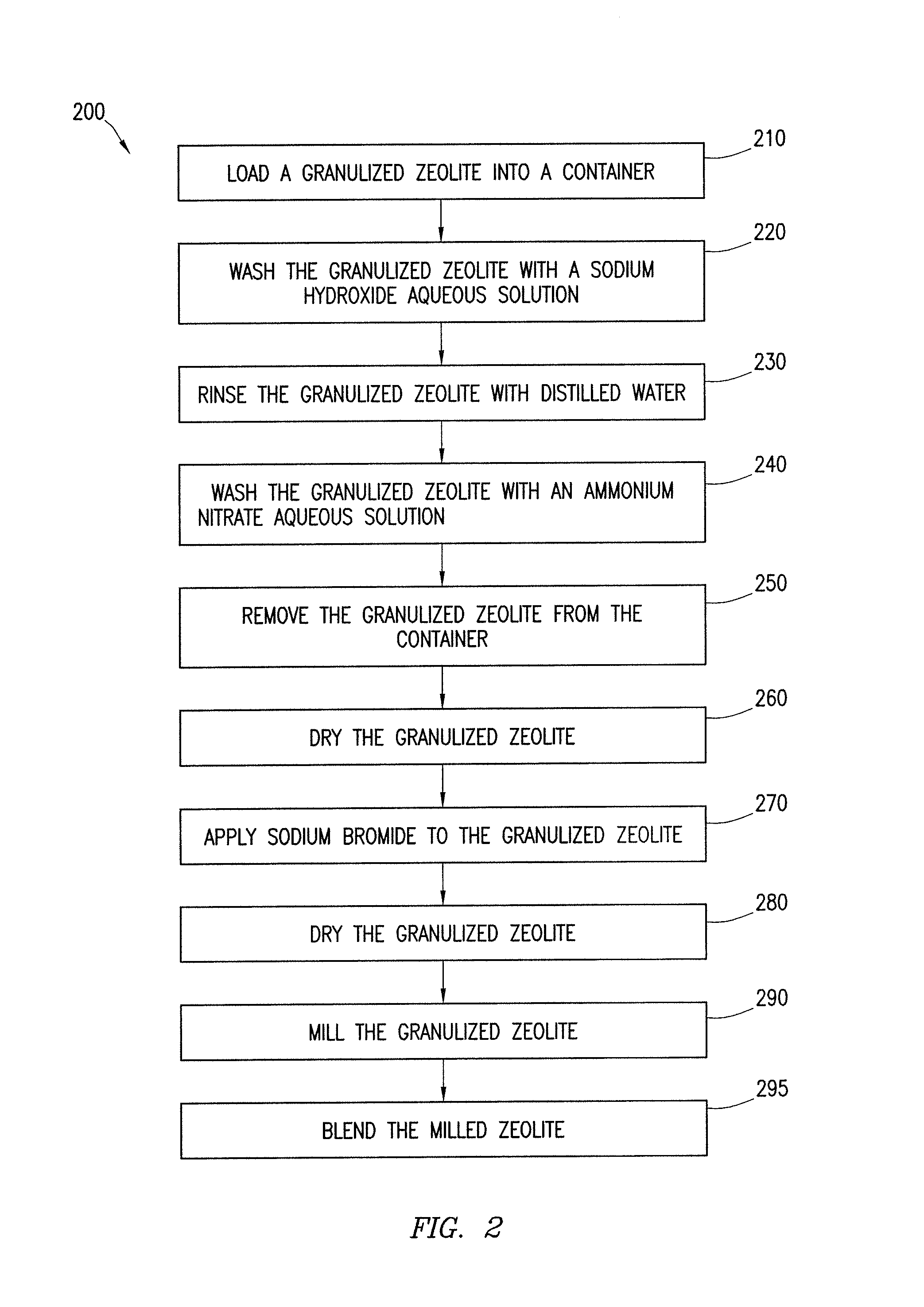Mercury removal from flue gas streams using treated sorbents
a technology of sorbent and flue gas, which is applied in the direction of physical/chemical process catalysts, other chemical processes, separation processes, etc., can solve problems such as compromising concrete integrity, and achieve the effect of reducing or eliminating the disadvantages and problems of the performance of a sorben
- Summary
- Abstract
- Description
- Claims
- Application Information
AI Technical Summary
Benefits of technology
Problems solved by technology
Method used
Image
Examples
Embodiment Construction
[0045]Embodiments of the present disclosure and its advantages are best understood by referring to FIGS. 1 through 5 of the drawings.
[0046]Utility plants often treat flue gases to reduce or remove various contaminants, such as sulfur oxides (SOx), particulate matter (PM), and heavy metals, in order to comply with environmental and health-related regulations. Introducing a sorbent into a flue gas stream may allow for the reduction or removal of mercury, a heavy metal, through various chemisorption and physisorption phenomena. These sorbents are often captured in the particulate collective devices that are used by utility plants to capture PM, which is often present in the form of fly ash. Utility plants may consider recycling the collected fly ash due to the pozzolanic and cementitious properties of fly ash, e.g., the ability of the fly ash to demonstrate a binding characteristic in the presence of water and various hydraulic cements. See Dwight K. Smith, Cementing 7-17, 38-40 (5th p...
PUM
| Property | Measurement | Unit |
|---|---|---|
| median particle diameter | aaaaa | aaaaa |
| pore size | aaaaa | aaaaa |
| particle diameter | aaaaa | aaaaa |
Abstract
Description
Claims
Application Information
 Login to View More
Login to View More - R&D
- Intellectual Property
- Life Sciences
- Materials
- Tech Scout
- Unparalleled Data Quality
- Higher Quality Content
- 60% Fewer Hallucinations
Browse by: Latest US Patents, China's latest patents, Technical Efficacy Thesaurus, Application Domain, Technology Topic, Popular Technical Reports.
© 2025 PatSnap. All rights reserved.Legal|Privacy policy|Modern Slavery Act Transparency Statement|Sitemap|About US| Contact US: help@patsnap.com



